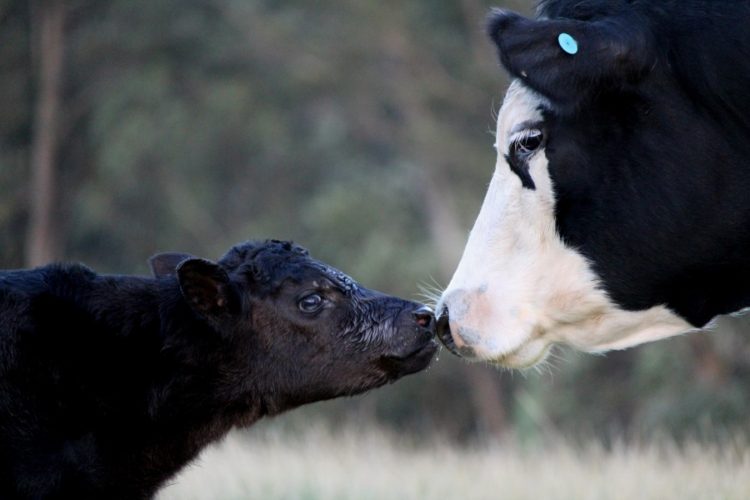Anyone taking care of a newborn calf will be aware that the first seven days of a calf’s life can be critical. Indeed the first week in any newborn’s life is so important.
Research shows that seventy percent of the pre-weaning deaths occur within the first week after birth amongst cattle. The causes of these deaths can include low birth weights, cold weather, difficult births, and poor immunity.
Also important is the late-gestation nutrition of the mother. The goal is to keep a cow in adequate body condition, while not allowing her to become too fat or too thin.
When a calf has had a difficult birth or has been exposed to cold and wind, it has a reduced desire to nurse.
In taking care of a newborn calf, make sure immediately after birth that the calf is dried to avoid heat loss. Provide good amounts of dry bedding and keep the pen draught-free. Dip the navel with an approved iodine solution and then weigh the calf.
Calves should stand and nurse within two hours of birth if everything is normal and weather is not severe. Calves that are constantly shivering and have not nursed need to be warmed. Worse yet calves that are lethargic and unable to rise need help right away. If you put your fingers in a calf’s mouth and it feels cool and the calf has no suckling reflex, then the calf is critical and needs to be warmed immediately. Remember these signs of hypothermia.
Importance Of Colostrum
As with any baby, the first 24 to 72 hours are critical for immunity of the calf. Calves need colostrum, which contains not only energy and nutrients, but also maternal antibodies, which provide immunity to the calf. Providing adequate nutrition to the cow/heifer prior to calving to supply sufficient energy and protein is critical to production of colostrum.
By 12 hours, the ability of a calf to absorb antibodies from colostrum is reduced by 50%. By 24 hours he cannot absorb antibodies at all. Calves that don’t get enough colostrum in the first 12 hours are more likely to have scours and respiratory problems.
Colostrum protects the calf through its first weeks until its own immune system produces sufficient immunoglobulins. Developing this active immunity is crucial for the long term health of the calf.

If the environment is conducive the calf should feed several times during the first 12 hours. If the calf is struggling to feed you will need to assist it by bottle feeding. You’ll have to milk the cow or, if she is has problems, use frozen colostrum saved from another cow in the herd. If you are using frozen colostrum, thaw at room temperature or in warm water. Do not thaw in the microwave as higher temperatures affect antibodies. They are then ineffective in establishing immunity.
It is not recommended to feed the calf milk or electrolytes before it is given the colostrum. This can reduce the absorption of the antibodies by the calf. A calf should receive five to six percent of its body weight in colostrum within the first six hours of life.
During the first day the calf is still susceptible to hypothermia, so check regularly. Make sure the cow is doing a good job of mothering the calf and the calf appears to be getting enough to eat.
Days 2 and 3
By the second day, the calf should easily be able to follow its dam, but calves will also sleep a lot during the first week of life. The calf should look perky and well fed.
By the third day, the calf should be spunky and be hard to catch. If mother and calf are doing well, move them from the calving area to the large pasture. Keeping cow/calf pairs spread out on a large, well-drained pasture is a key to reducing the incidence of scours in young calves.
If the mother has a retained placenta, treat it with a long acting antibiotic or as directed by your veterinarian, before turning them out to the big pasture.
Move weak calves or cow/calf pairs with mothering problems from the calving pasture to a barn or special well-drained paddock. There they can have extra attention and care. Putting weak calves in a muddy, dirty or wet area is a sure formula for a dead calf.

To read more on livestock click here.
To receive all our notices and each edition of SA Smallholder Digital Magazine register here.

